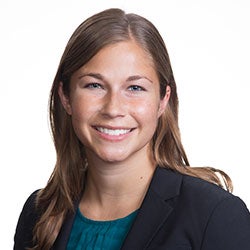Four archetypes that define new ways of working
In the war for white-collar talent, employers are motivated to support these changes. This is even more pronounced now that they compete not just with local employers, but nationally and even internationally amid more virtual ways of working.
-
Traditionalist. A traditionalist is someone who spends five days a week in the office, with a fixed primary residence and schedule. Pre-pandemic, traditionalists accounted for 55% of the white-collar workforce in the U.S. Today, their share is down to around 34%.
-
New-norm seeker. Like the traditionalist, the new-norm seeker has a fixed primary residence. However, new-norm seekers typically don’t put in a full week at the office anymore. While they often follow a fixed schedule, many value being able to vary this occasionally. New-norm seekers account for about 35% of today’s workforce.
-
Flexible worker. This emergent white-collar segment fully embraces new work flexibilities. They can spend anywhere from zero to five days a week in the office. They want the options to relocate throughout the year, change their work schedules (e.g., sabbaticals, rotations) or both. Flexible workers fall into two subtypes: the occasional wanderer who balances work-from-home flexibility with the social benefits of going into an office occasionally (4% of the current workforce) and the digital nomad who has given up their primary residence (3% of today’s workers).
-
Remote worker. Remote workers spend no time in the office. They have a fixed primary residence, and their schedule is relatively predictable. Remote workers made up 13% of the white-collar workforce pre-COVID-19. Today, their share is up to 24%. While the stereotype is of people going off grid to live in remote cabins, 80% of this segment actually live in the suburbs and even urban locations. Remote work is especially important to women who, as job seekers, are twice as likely as men to focus exclusively on remote work.
Each work archetype has different expectations and needs. Understanding them will help businesses anticipate demand for real estate, transportation, lodging and leisure. It can also inform the development of new solutions and marketing materials targeting the most relevant cohorts.
Traditionalists are generally more ready to bounce back to normal. Most feel some degree of loyalty or tie to their employer, aren’t actively looking for a new job opportunity and believe work is no less important in their lives than it was at the start of the pandemic. Even so, well over half acknowledge the pandemic has altered their outlook on their health, and 64% plan to spend significantly more time and money on their health and well-being.
New-norm seekers tend to report no reduction in the importance of work in their lives, nor any decrease in employer loyalty. Vacation time and long weekends remain unchanged. But 46% of new-norm seekers did change the way they work, by either negotiating flexible arrangements or achieving the same outcome by combining part-time gigs. Roughly half plan to increasingly prioritize family activities, noting that the pandemic has made them permanently closer to their children, significant others and pets.
Flexible workers also feel more drawn to their personal relationships, but they’ve loosened ties to their employer. Occasional wanderers plan to invest more time and money in their fitness and personal well-being, reallocating their time and money accordingly. Nearly three-quarters have reduced the amount of time they work by negotiating flexible hours (33%), switching to a part-time job (22%) or taking a sabbatical (18%).
Digital nomads are likely to say work is an important part of their identity, but they seek greater balance in their lives. About a quarter have moved from full-time to part-time or gig work. Forty-two percent are taking more vacation days and long weekends than they did pre-pandemic, and half or more of their vacation time is flexcation.
Remote workers tend to feel less attachment to their work in general — only 38% say work is an important part of their identity — but being remote isn’t a geographic decision, it’s a lifestyle. At least half indicate no change in spending or behavior related to work, community or leisure. The majority feel closer to their family. About half plan to invest in their homes, and 57% plan to invest in their well-being.
Businesses can develop new strategic approaches by considering the various attributes of each archetype (see Table 1).








